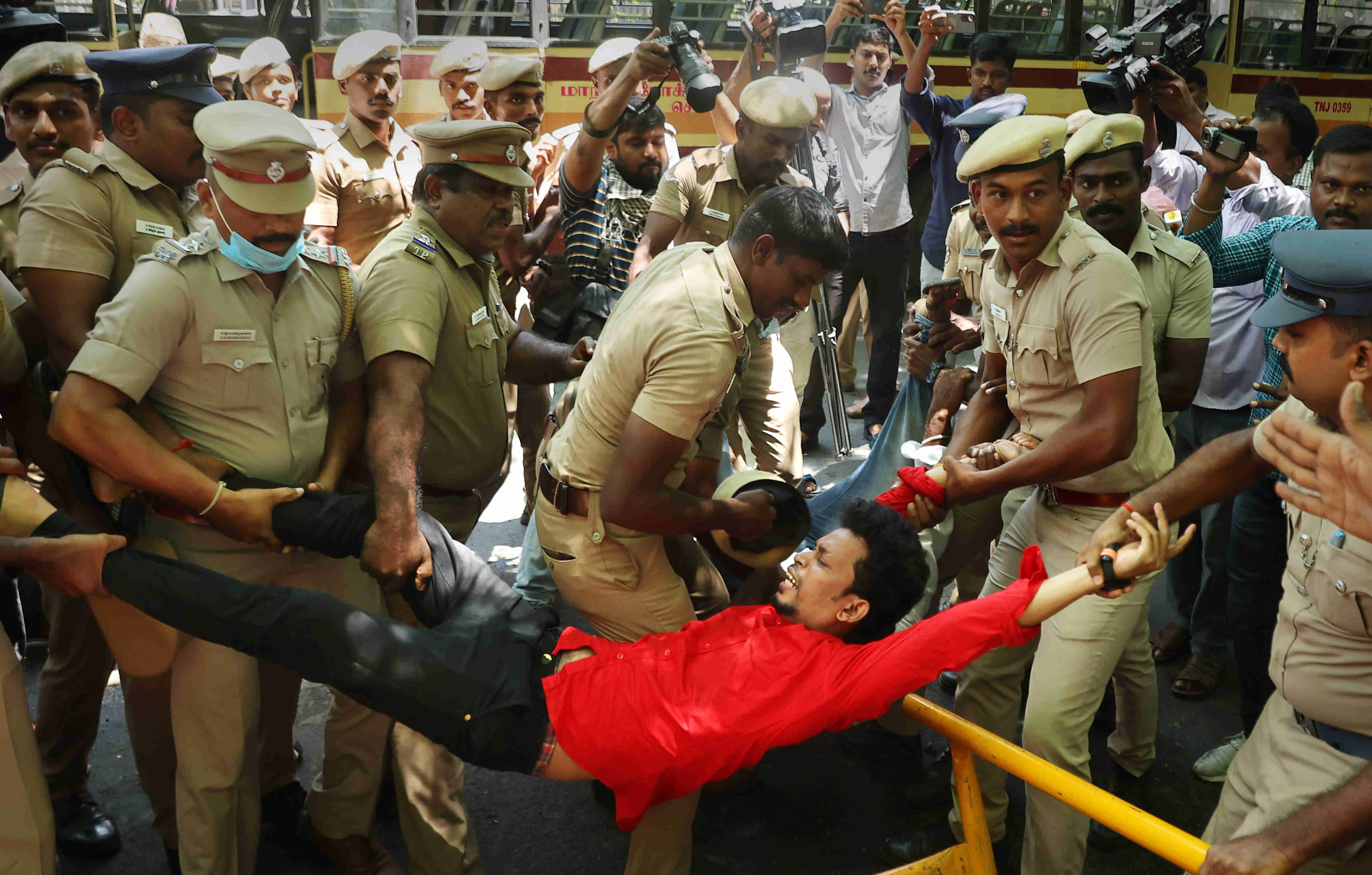Path of fire
The much-hailed Agnipath scheme has caused nationwide furore among the youth; we must understand why

Amitabh Bachchan's 1990 blockbuster movie, 'Agneepath', received a resurrection from unlikely quarters. The ruckus created by the Government's new army recruitment scheme, also named 'Agnipath' (yes with an 'i' and not double 'ee'), has literally set the country into the path of fire. While there are no guttural dialogues from Big B speaking about his daddy, the current scenario in the country is no less dramatic.
What was being hailed as a novel way to recruit short service soldiers into the Indian army, quickly started receiving brickbats before it came down to blows. Succinctly put — the new scheme would recruit 45,000 to 50,000 soldiers or Agniveers every year into the Indian army. A majority of these soldiers would leave the army after 4 years while 25 per cent would be permitted to continue for 15 years. Currently, short service commission has a duration of 10 years, which can be extended by 4 more years.
These Agniveers would get Rs 4.76 lakh as salary package in the first year, which would be bumped up to Rs 6.92 lakh by the fourth year. A portion of their salary would be kept aside every year towards the individual's Agniveer Corpus Fund, which will contribute to the one-time Seva Nidhi package of a lump sum of Rs 11.71 lakh (tax-free) to be receivable at the end of the fourth year. A skill certificate would aid with post-service job hunt, there will be help with bank loans, but no pension. To placate the youth who had advanced in age and couldn't join the army during the pandemic, the Government even increased the upper age limit for candidates from 21 to 23, applicable only for this year.
The scheme was aimed at harnessing the power of youth from various sections and skillsets of the country, including women. The defence forces say that the goal was also to upskill and train the youth of the nation and prepare them for the future. The Indian army's median age has been higher than many other nations; and a scheme like Agnipath would lower average age from 32 to 26 by bringing in recruits as young as 17.5 years of age. Younger people make for the healthier, fitter, tech savvy, and more adaptable recruits. Also, to be achieved but not publicised naturally is that this recruitment scheme would still feed the world's second largest army with younger talent while reducing salary and pension bills.
But there was no calming the irate youth and the scheme has had an opposite effect. Much has been spoken about the frightening scenes of havoc and arson created by those that aspire to protect the country. And while violence of any sort is to be condemned, and it's fitting that Agniveers will have to give sworn statements of non-participation in the violence if they want to join Agnipath, we should ask ourselves what led to such anger? After all, there are similar schemes working successfully in other countries. The US, France, China, Russia, and Israel have similar schemes that have worked well for them.
The biggest grouse of the marauding youth is future joblessness. Their aspiration was to join one of the largest job creators in the country — the Indian army, which currently recruits 1.45 million personnel. They feel that they will be short-changed and left to fend for themselves after four years. Their fear today is the same fear that they think they will face four years later — unemployment. Two years of the Covid-19 induced pandemic has wiped out livelihoods and pushed many sections of the Indian population back into poverty. So, while we chastise the protesters for the violence and damage of public property, let's also be compassionate about where this anger is stemming from — it comes from fear. India's unemployment rate was at 7.83 per cent in April, up from 7.6 per cent in March, according to the Centre for Monitoring Indian Economy (CMIE). Joblessness in Indian cities or urban unemployment rate increased to 9.22 per cent from 8.28 per cent.
The youth of India need to hear more from industrialists such as Anand Mahindra who stated that discipline and skills of Agniveers would make them 'eminently employable'. Others in the private sector could introduce programs to recruit Agniveers in future while the Government itself must double down and relook at providing more transitionary help to Agniveers. State governments of Assam, Uttar Pradesh, Madhya Pradesh, Haryana, Arunachal Pradesh, Uttarakhand, and Karnataka have decided to give Agniveers priority in jobs of the state government, while the Centre has approved a proposal that 10 per cent of the job vacancies in the Ministry of Defence will be reserved for Agniveers and also help them get recruited in Central Armed Police Forces (CAPFs) and Assam Rifles. While we debate the pros and cons of the recruitment scheme and hope that reasonable arguments from army veterans and security experts decide the final outcomes, we need to find a way to assuage our youth.
The writer is an author and media entrepreneur. Views expressed are personal



